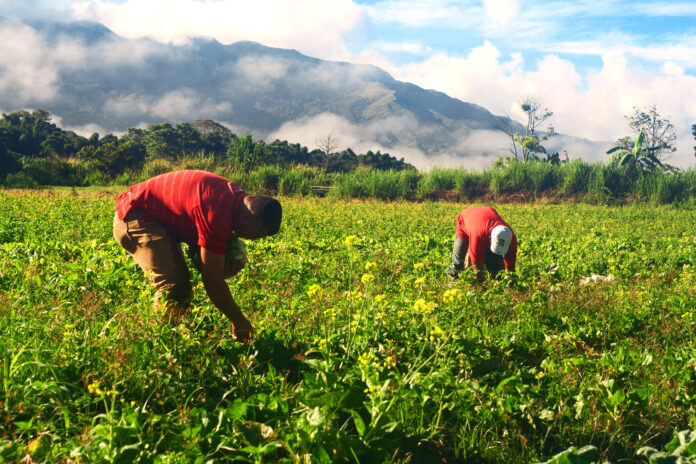More than six out of every 10 people in Sub-Saharan Africa work in the continent’s agriculture sector. We may not realize that what grows from African soil may be connected to some of the world’s most popular foods.
Africa produces the world’s largest supply of cocoa, used in chocolate bars and other products. Ethiopia and Uganda-grown coffee beans, which dominate Africa’s coffee exports, valued at nearly $2 billion last year.
The volume of African commodity exports is rising. At the same time, more Africans are facing food insecurity. Around 246 million Africans go to bed hungry every night. The pace of Africa’s agricultural growth is not keeping up with Africa’s population growth.
On World Food Day, it is time for African and global leaders, as well as development organizations, to join the African Development Bank Group’s call for increased investments in agricultural technologies that boost Africa’s food production and food security in the face of climate change.
The continent has immense potential to feed itself and to become a breadbasket to the world: about 65 percent of Earth’s remaining uncultivated, arable land is in Africa. However, that potential is threatened by erratic weather extremes. It is also stunted because a majority of African food growers are subsistence smallholder farmers. We need to scale up the delivery of modern and climate-smart farming practices.
The African Development Bank Group’s investments are helping African farmers put more food in the mouths of more Africans. Since the Bank launched its Feed Africa Strategy in 2015, more than 74 million people are benefiting from access to improved agricultural technologies, resulting in higher food production.
Our flagship program, Technologies for African Agricultural Transformation (TAAT) has provided 11 million farmers across 29 African countries with proven agricultural technologies such as drought-resistant maize, heat-resistant wheat, higher-yielding seed varieties and seed treatments to protect against pests like the fall armyworm, which has been devastating African crops in waves of hungry, winged swarms.
TAAT has produced astonishing results in under three years. African food production has expanded by more than 12 million metric tons. TAAT has reduced Africa’s food imports worth $814 million. We are on our way to reaching our target of reaching 40 million farmers with modern and climate-resilient technologies.
Aligned with the World Food Day 2021 theme, “Our actions are our future. Better production, better nutrition, a better environment and a better life,” the Bank is delivering higher food production, access to more nutritious foods and helping farmers adapt to environments impacted by climate change. We advocate for gender-sensitive policy reform and gender-inclusive development.
Combined, these activities are raising incomes for women and men in farming and contributing to a better quality of life for Africans all along the food value chain.
The Bank’s Affirmative Finance Action for Women in Africa (AFAWA) initiative aims to reduce the access to financing gap women businesses face across the continent, including women working in agriculture.
AFAWA has just put $20 million into a project on financing climate-resilient agricultural practices in Ghana. It will target hundreds of women-led enterprises through lines of credit with Ecobank Ghana, as well as provide them skills training on climate adaptive farming.
We are on the right path, but we need to do more. At a recent “Feeding Africa” event hosted by the Bank and the UN International Fund for Agricultural Development, more than a dozen African heads of state and other world leaders endorsed the creation of a Financing Facility for Food and Nutrition in Africa. The Facility proposes a new approach to investing in agriculture and agri-business, based on five pillars:
Scaling up of proven climate-adapted, science-based production and other technologies;
• Creating an enabling environment for enhancing agricultural production. Governments must commit to policy and regulation that facilitates access to modern technologies;
• Building critical backbone infrastructure linking production areas to markets and processing at African national and regional levels;
• Crowding in private-sector investments and access to finance. Private sector investment and business expertise will grow food supply chain commercial viability, as well as inclusion of more small and medium enterprises and smallholder farmers;
• Support to an African special emergency assistance fund on famine and drought.
The Facility expects to mobilize $1 billion over the next two years from green funds, bilateral and multilateral donors to support these pillars. We need more government, development partner, private sector and foundation “buy in” to scale up investments in this Facility.
The African Development Bank envisages a food-secure Africa that uses advanced technologies, creatively adapts to climate change and develops a new generation of “agripreneurs” — empowered youth and women who will modernize and industrialize agriculture.
The Financing Facility aims to accomplish that by bringing smart “agritech” to help millions of more African farmers to double major crop yields, produce enough food to feed an additional 200 million people and reduce incidents of malnutrition. Join us.
• Beth Dunford Vice President for Agriculture, Human and Social Development at the African Development Bank
Distributed by APO Group on behalf of African Development Bank Group (AfDB).











































